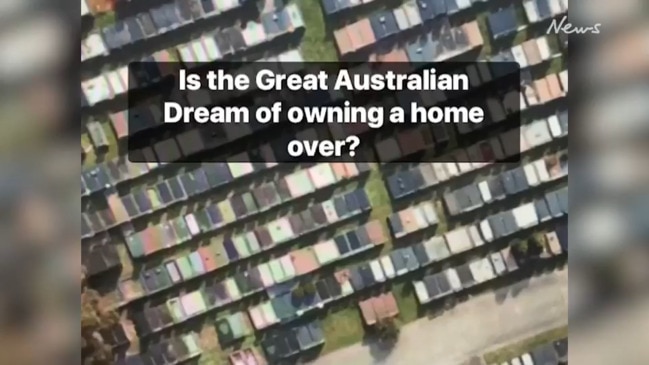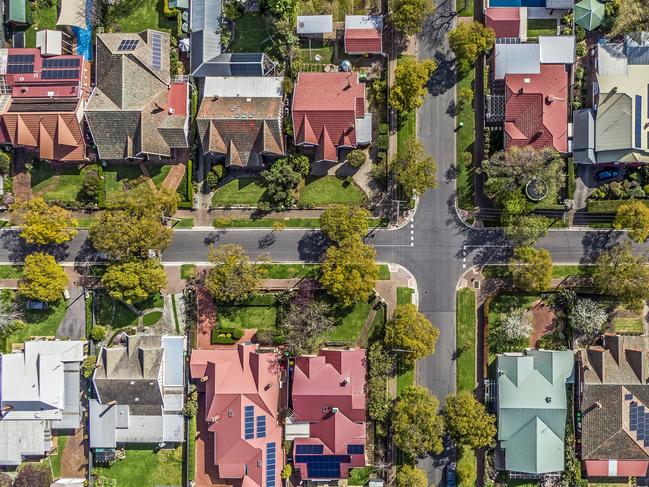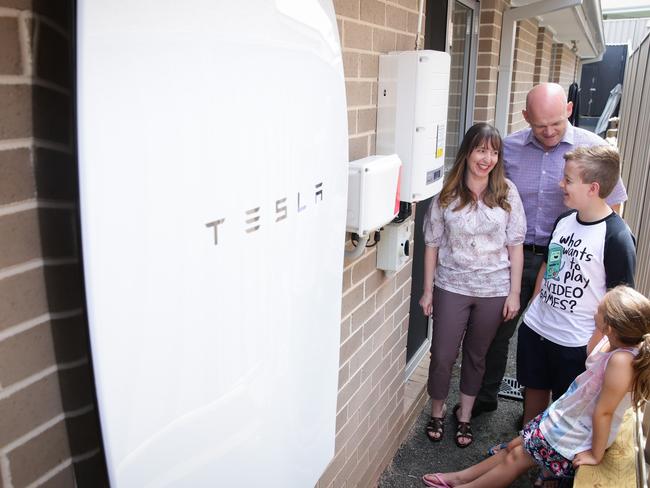‘A couple of caveats’: the realities of home solar
Home solar is not just a simple matter of ‘set and forget’ – homeowners need to consider a series of issues before committing.

Property
Don't miss out on the headlines from Property. Followed categories will be added to My News.
The demand for solar power at home has heated up in recent decades with now more than a third – or 3.6 million – of Australian households having panels overhead.
With the uptake increasing, solar systems will soon be standard and savvy homeowners don’t want to be left out in the cold.
A recent survey by Origin Energy revealed 77 per cent of Australians believe a home with solar panels is more valuable than one without.
The same survey also showed that 57 per cent of homeowners would pay up to $10,000 more for a home with solar.
With electricity prices skyrocketing, the switch to solar seems a sensible step but experts warn homeowners to do their homework before making the move.

HOME SOLAR; HOW MUCH DOES IT COST
How much solar costs to set up depends on location, the size of the system and whether a battery is included.
According to SolarQuotes, the price ranges for solar panels are: $4000 to $8000 for a 5kW system, $5500 to $9000 for 6.6kW and $8000 to $13,000 for 10kW. An average 10kW battery is about $10,000.
While prices of solar panel packages and battery storage has come down since the technology debuted, waiting for a bargain could be a costly error, says Chris Barnes, product category manager at Choice.
“If you can put solar panels on your roof, it’s pretty much a no-brainer,” Barnes says.
“These days it’s rare a home isn’t going to be suitable for solar panels. The real question is whether or not you’re going to be wedding a battery to the system,” he says, adding that the concerns of battery price shouldn’t stall the decision.
“Don’t shy away from getting solar because you’re worried about batteries being too expensive. You can always add a battery later.”
Consumers considering battery installation need to carefully crunch the numbers to determine when the pay-off will be.
“It’s not a guaranteed plug and play to save loads of money – not yet. There are a couple of caveats with batteries; prices were supposed to have come down but they haven’t really yet, and the technology is still developing,” Barnes says.
However, he says there’s no time like the present to start cutting energy costs.
“If you’re serious about saving on your electricity bills, think about putting solar on the roof as a priority. It’s good to plan ahead and take it step by step if you’re not ready to do it all at once.”

RETURN ON HOME SOLAR INVESTMENT ‘INSIDE 20 YEARS’
Chris Williams, founder of Natural Solar, says what was once a trend for early adopters and tech junkies has become a mainstream money saver.
“Solar is rapidly transitioning to a mass market industry,” he says. “If you’ve got a roof, we’re getting to a point where it’s literally going to cost you money not to put up panels.”
Williams adds that Australians can often be in two camps when it comes to solar battery storage with many naysayers stuck on the question of price and longevity.
“It’s about transitioning to a different lifestyle, another way of thinking and an acceptance of new technology,” he explains.
“The counterarguments are twofold. Firstly, battery warranties are generally 10 years and the expected lifespan is 15 to 20 years, or longer. Secondly, you’ve got to consider the price of electricity into the future, and petrol if you’re considering buying an EV. When you add it all up, most people are seeing a return on investment well inside that 20 years.”
Today the average cost of a combined solar panel and battery package is about $20,000 after the national solar rebate, and state programs can lower the price further, Williams says.
“For the return on investment, optimistically we’re looking at between five to eight years depending on where you live,” he says, adding consumers should factor in how long they will be in the house, if they intend to buy an electric vehicle or install a pool, or if the number of people living in the home is expected to change.
“Use your historical electricity consumption as a benchmark and then consider what will change in coming years. Because you’re not installing this system just to offset power today, you want to set it up for the next 15 to 20 years of renewable energy savings.”

BE ENERGY CONSCIOUS
Solar panel and battery storage technology has advanced dramatically in recent years, so consumers should make sure their advice is up to date.
“One misconception may be that you’ve got to live in a permanently hot, sunny location for a solar system to be a viable energy source. Solar panels still produce electricity when it’s cloudy and really hot days can slightly reduce their efficiency,” says Tara Donnelly, Canstar Blue’s utilities editor.
“Your solar installer can advise on the best angle and direction to place the panels on your roof, depending on where in Australia you live, to make sure they get maximum exposure to sunlight,” she says.
Your location can also determine the total value of any rebate you’ll receive as well as your state government’s feed-in tariffs. The small rebate of a few cents for each kilowatt hour (kWh) of unused electricity generated and exported back into the electricity grid can really add up.
By getting three to five like-for-like quotes clearly itemising the price of hardware, installation and potential rebate discount, you can make an informed decision.
“Another assumption might be that whacking some panels on the roof is ‘job done’ when it comes to going solar. The truth is, to squeeze all potential savings available from generating your own electricity you need to be conscious of when you’re using that electricity, what rate you’re paying for grid electricity, and what feed-in tariff you’re receiving for electricity you send back to the grid.
“You’ll also need to maintain your solar panels over time so they work efficiently. Going solar isn’t necessarily hard but you’ve got to commit.”
More Coverage
Originally published as ‘A couple of caveats’: the realities of home solar




